Berry Natives For Your Yard: Attempt These Native Berry Bushes
Foraging on native berry bushes whereas climbing is an unforgettable experience, nonetheless you could develop berries native to North America in your particular person yard. North America has varied climates, quite a lot of them residence to a variety of berries. Understanding about native vegetation supplies you the inside observe on cultivating among the many most naturally prolific, healthiest and rewarding varieties for every your self and for wildlife. Your native plant center can help you uncover a number of of those native berries to North America, nonetheless this data covers 10 of the perfect to benefit from correct outdoor your door.…
Attempt These 10 Tasty Native Berry Bushes
It’s vitally very important to know your berries. Throughout the wild, there are spherical 300 species of berries in North America. Nonetheless not every berry is fit for human consumption. As berry foragers will inform you, solely 10 p.c of white and yellow berries are edible, whereas spherical 50 p.c of purple berries are implausible, and 90 p.c of blue and black berries are fit for human consumption.
So it’s sensible to know the perfect native berries you could develop your self for tasty, healthful and utterly safe fruiting rewards. Native berry vegetation develop in quite a lot of soils, nonetheless need well-draining, acidic web sites. For anyone making an attempt to enhance their fluctuate of native shrubslisted beneath are some favorite fruiting varieties to attempt rising your self:
1. Blueberry
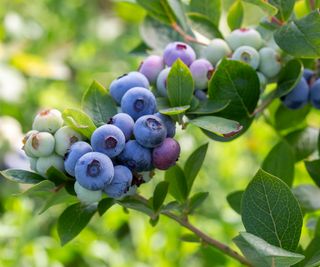
(Image credit score rating: Esin Deniz / Getty Images)
Blueberry vegetation are small bushes with shiny inexperienced, ovate, pointed leaves. The little bushes produce white flowers that in flip flip into chubby, spherical blue fruits. There are highbush and lowbush sorts of blueberryeach native to completely completely different parts of the nation. Highbush berries are strewn all through japanese North America, whereas lowbush varieties are further widespread in north-central parts of the US and into the Pacific Northwest. Blueberries need acidic, moist soil. Attempt Blueberry corymbosum or Bluecrop, a mid-season producer.
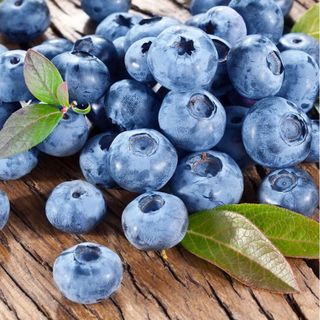
Vaccinium Corymbosum ‘Bluecrop’
This highbush cultivar from Inexperienced Promise Farms produces large and juicy blueberries in abundance, sooner than setting a fall yard alight with purple foliage.
2. Elderberry
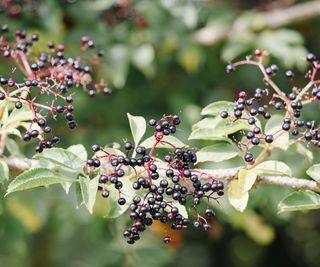
(Image credit score rating: AL Hedderly / Getty Images)
These are very elegant vegetation with lacy leaves and umbels of tiny flowers. As quickly because the flowers have gone, small deeply purple berries type. These are generally utilized in jams and even wine. Elderberry vegetation may type a multi-stemmed bush or single-stemmed tree as a lot as 6 toes (1.8m) in high. Native elderberry varieties need continuously rich, moist soil.
3. Gooseberry

(Image credit score rating: Klaus Hackenberg / Getty Images)
There are a variety of types of gooseberries you could develop with Whitestem and Rocky Mountain 2 of the additional widespread. Whitestem has nearly black berries, whereas Rocky Mountain has purple fruits. Every of these vegetation have spines and palmate leaves. They develop wild in mountain areas and require moist soil in spring. They’re tolerant of the chilly and are nice in cool native climate areas.
4. Salmonberry
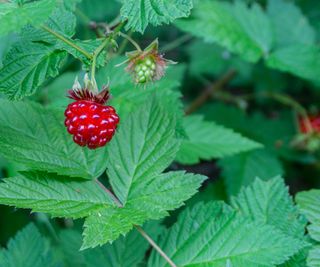
(Image credit score rating: Melinda Podor / Getty Images)
For many who’ve ever observed a berry that seems like a raspberry nonetheless is not going to be purple, it might be a salmonberry. These fruits have yellowish-orange coloring. They’re mixture berries, very like raspberries or blackberries. They’re late spring fruits and are current in dappled delicate, near water, and beneath bushes.
5. Huckleberry
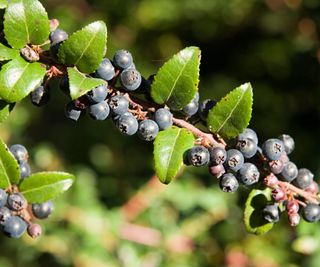
(Image credit score rating: Step2626 / Getty Images)
Found inside the Pacific Northwest, these have a protracted historic previous as an indigenous meals, every up to date and dried. When ripe, these berries appear to be nearly black in coloration. Huckleberry vegetation are evergreen and produce fruits within the summertime. The fruit is nice with a little bit little bit of tartness. These berry vegetation develop in shaded locations and like moist soil.
6. Juneberry
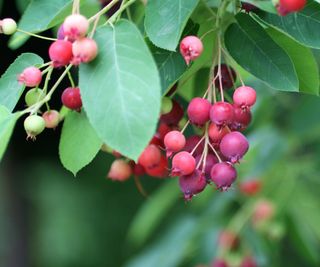
(Image credit score rating: Merrymoonmary / Getty Images)
The berries on this tree-like bush (which is commonly often known as the serviceberry) look very similar to a blueberry. These vegetation need sandy soil and are most continuously found on the perimeters of deciduous forests. These fruits have cherry and almond notes. The leaves are oval and barely serrated, and the bark is silvery.
7. Salal Berry
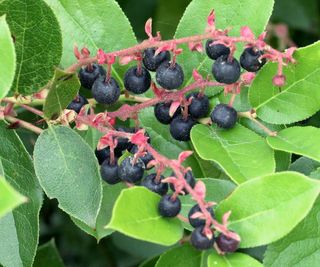
(Image credit score rating: Randimal / Getty Images)
The evergreen leaves are shiny and pointed, with blushed stems. They develop in all types of climates and are pretty winter hardy. The fruit was an very important meals provide for indigenous communities. The berries are darkish blue, oval to spherical, and sweet. Plant the bushes in partial photo voltaic to full shade and maintain the soil moist.
8. Thimbleberry
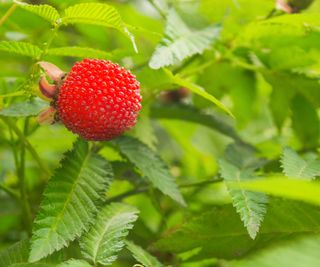
(Image credit score rating: Karlevana / Getty Images)
Thimbleberries are a wild bramble with barely chalky berries. The leaves are maple-shaped and the berries are sweetly tart and sensible purple. Spring flowers are starry white. They like moist soil, nonetheless can tolerate dry web sites. Plant in full photo voltaic and provide fixed moisture.
9. Honeyberry
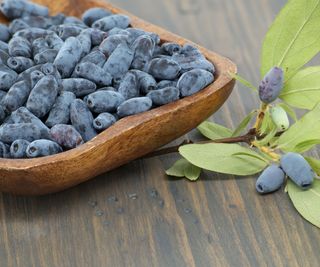
(Image credit score rating: NetPix / Getty Images)
One in all many sweetest berries obtainable, honeyberries are a species of honeysuckle. They like colder climates and moist soil. Small, funnel fashioned, creamy white flowers flip into elongated purple-blue fruits. These bushes (usually often known as haskaps) are comparatively pest free and can be found fairly a number of cultivars.
10. Oregon Grape
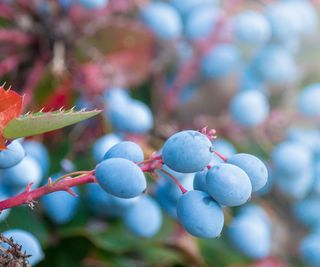
(Image credit score rating: Larysa Lyundovska / Getty Images)
The fruits of Mahonia nervosa model nothing like customary dessert grapes, although they do look comparable. The leaves are serrated and have a sharp edge like holly. The berries was used as dye and in medicine. They’re tart nonetheless, when mixed with sweeter berries, delicious. As well as they make great wine. You can develop Oregon grape bushes in every moist and dry areas, sunny or partially shaded.




:strip_icc()/string-of-dolphins-plant-2c6cd16f926e414ea40709877a38ca85.jpg?w=1200&resize=1200,0&ssl=1)
:strip_icc()/aspidistra-elatior-2878748c-305bd43f532b4374baa4728304c2b148.jpg?w=1200&resize=1200,0&ssl=1)
